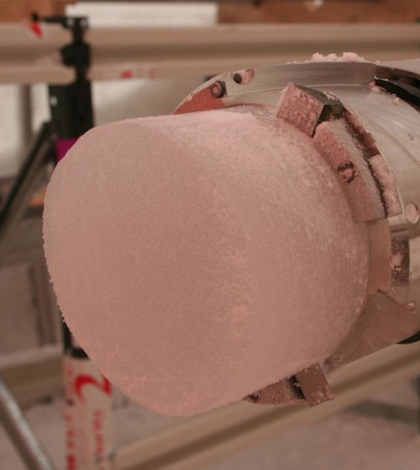Ocean Heat Transport, Atmospheric Circulation Aimed For Balance In Ancient Climate

Ice core from East Antarctica. (Credit: Joel Pedro)
Unlike most studies investigating the ocean transport of climate changes from one place on the global map to another, a study by scientists at the University of Copenhagen focused on weather in the Southern Hemisphere during the last ice age.
Evidence suggested a North-South bi-polar ocean seesaw, where warm Atlantic currents raised the temperature in Greenland and the North Atlantic but also caused the South Atlantic to become cooler. Many data sources from the last ice age were used to confirm the seesaw hypothesis, including Antarctic ice cores, Australian cave records, Patagonia glaciers and rodent middens from Africa.
Results showed that ocean heat transport and atmospheric circulation attempted to strike a balance, with atmospheric circulation moving to send heat southward if ocean heat transport sent warmth northward. However, data from the Southern Hemisphere showed that the balancing attempt was imperfect and one type of heat movement tended to win out over the other.
Top image: Ice core from East Antarctica. (Credit: Joel Pedro)




0 comments